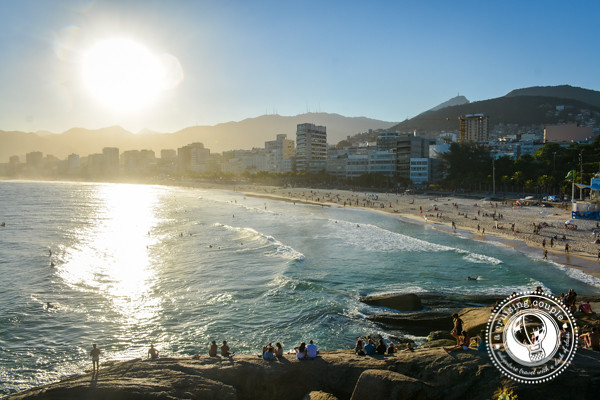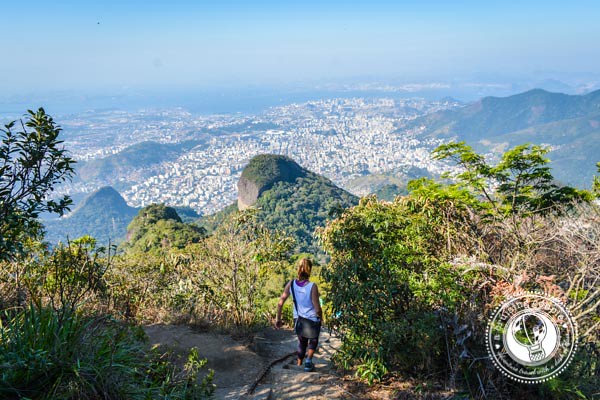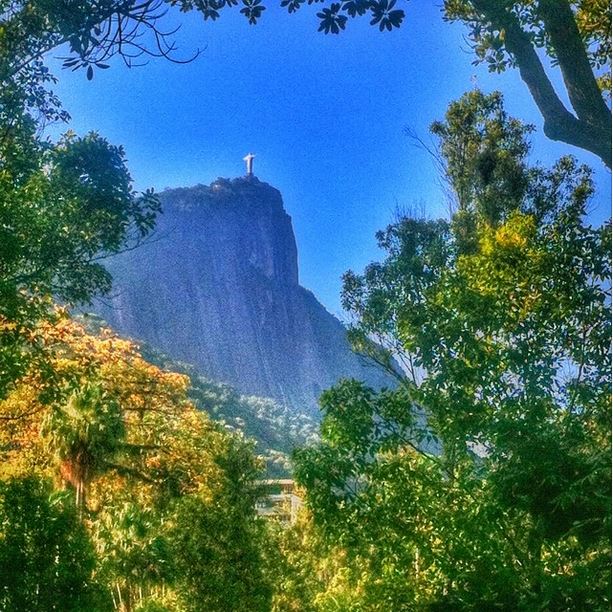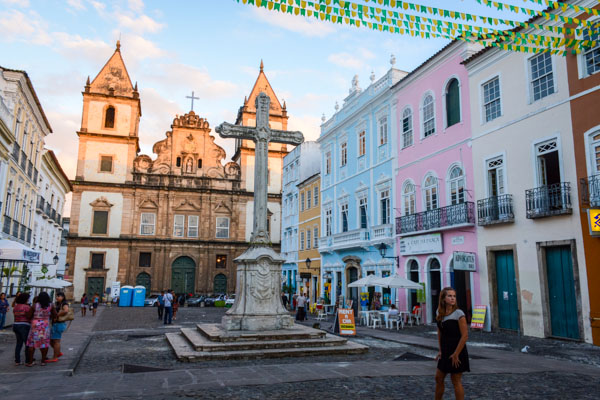We think Rio de Janeiro boasts one of the most spectacular urban landscapes in the world. With golden sand beaches, striking mountains, and dense, tropical jungle, ‘La Cidade Maravillosa’ doesn’t fall short when it comes to that wow factor we’re all after. That means you can revel in city’s vivacious energy, swaying your hips to samba music into the early morning hours, then head outside to explore any of these top outdoor attractions in Rio de Janeiro. (That includes the largest urban forest in the world: Tijuca Forest!)
It’s this brilliant balance of cosmopolitan flair and awe-inspiring natural beauty that cements Rio de Janeiro as one of our favorite urban destinations anywhere in the world.
So, after you explore the city’s best restaurants, museums, and shopping spots, head outside to enjoy these top 10 outdoor attractions in Rio de Janeiro. From adrenaline-pumping adventures to unparalleled photography opportunities, there’s an outdoor adventure in Rio for everyone on this list.
Top 10 Outdoor Attractions in Rio de Janeiro, Brazil
1. Climbing Sugarloaf Mountain
Rio de Janeiro is considered to be one of the world’s best locations for outdoor urban climbing. It’s not necessarily the easiest place for climbing (most routes are intermediate to advanced). Still, if you have a little bit of climbing experience, you’ll be spoilt with choices, especially around the Urca area of Rio.
For the climb of a lifetime, don’t miss the chance to scale Sugarloaf Mountain. We admittedly took the gondola to the top, but we would love to give this climb a go if we ever return to Rio de Janeiro.
There are a few options for climbing Sugarloaf Mountain in Rio de Janeiro. If you’re confident climbing 5.10 (6a) routes, we recommend the Italianos Route, dubbed one of Brazil’s top 50 classic climbing routes. For a slightly less vertical course, there is Coringa, a 5.8 (5). And if you’ve already climbed Sugarloaf Mountain once, don’t let that deter you! With over 40 climbing routes, there’s a new way to experience this iconic attraction in Rio de Janeiro every time you scale it.
Beginners with no previous mountain climbing experience can still ascend Sugarloaf Mountain via hiking, climbing, and gondola. We’ve heard great things about Companhia da Escalada, including their rock climbing courses and tours.
It’s possible to rock climb Sugarloaf Mountain all year long, though note that the morning heat can be brutal!
2. Wander Through Rio de Janeiro’s Botanical Gardens
We’ve visited many botanical gardens on our travels, and while we typically enjoy them, they aren’t necessarily anything to write home (or on the blog) about. But Rio’s picture-perfect Botanical Gardens are certainly an exception. Throughout the 1.5 square kilometers, expect to discover manicured gardens, some 6,500 exotic plants, towering palms, and serene ponds. We recommend taking your time as you meander along the paved walkways and enjoy the scenic escape in the city center. The Jardim Botânico is teeming with wildlife—don’t be surprised if you spot toucans and monkeys, too!
While you’re exploring Jardim Botânico, don’t miss the Avenue of Royal Palms. This 750-meter long path is flanked with towering palms and is a popular photography spot as well as top outdoor attraction in Rio de Janeiro.
To make the most of your visit, you can follow one of three themed routes on a self-guided tour. You’ll find them in detail on the Jardim Botânico website, but they can be summarized as:
1. The Arts Trail
In addition to its flora and fauna, Rio de Janeiro’s Botanical Garden is home to a rare artwork collection, with pieces that have been incorporated since the park’s founding in 1808.
2. The Historical Trail
Follow important architectural and artistic monuments throughout the park, which tell a story about the Botanical Garden’s rich history and compelling future.
3. The Noble Trees Trail
Discover some of the most important tree species that call Rio’s Botanical Gardens home.
Alongside the impressive collection of gardens (many of which are categorized by species or concepts), you’ll also find a few museums and an exquisite research center.
3. Cycle The Rodrigo de Freitas Lagoa
One of the best ways to actively explore all of Rio de Janeiro’s most beautiful attractions is via bicycle. The city has some 250km of bike lanes—and over 600 BikeRio city bikes available for rent. Our favorite place for a leisurely afternoon of biking was the Rodrigo de Freitas Lagoa, also known as ‘The Heart of Rio de Janeiro.’ A 7km path surrounds the seawater lagoon and affords fantastic views of Christ the Redeemer. You’ll find bike rental stations at points around the Lagoa.
If biking isn’t your thing, there are also opportunities for jogging, yoga, skating boarding, and water activities like canoe rentals and wake boarding.
Insider tip: Plan your bike ride around the lagoon on a weekday to avoid the crowds of joggers and families.
The Rodrigo de Freitas Lagoa is within walking distance of the Botanical Gardens and other popular things to do in Rio (like Impanema and Cococabana), making it an easy add-on to any Rio de Janeiro itinerary.
4. Hike To Dois Irmãos: Our Favorite Attraction in Rio de Janeiro
For one of the best views in Rio de Janeiro, make the trek to the top of Dois Irmãos. Translating to “Two Brothers,” you can’t miss these iconic twin pointed peaks when gazing back at the city from Ipanema.
Located behind the Vidigal Favela, it wasn’t all that long ago that hiking this mountain would not have been possible if you weren’t a favela resident. Now, though, Vidigal is much safer, and tourists need not worry about exploring this vibrant, colorful area of Rio de Janeiro.
The hike is short but intense; if you’re fit, it will take around 45 minutes to an hour to reach the summit and its panoramic views of Leblon and Ipanema. We recommend timing your hiking adventure with the sunset or if you’re ambitious the sunrise. Descending down the back of the hill, you’ll also have the opportunity to view Rocinha, the largest favela in Brazil.
To arrive at Dois Irmãos, you’ll first need to head to Vidigal. Most taxis won’t go inside Vidigal, so hire a moto-taxi or wait for the shuttle vans to take you to the trailhead.
Hiking to the top of Dois Irmãos is hands-down one of our favorite outdoor attractions in Rio de Janeiro. Don’t skip this one!
5. Surf Any Of Rio’s Flawless Beaches
Surfing in Rio de Janeiro is a massive part of the city’s culture. Whether you’re a total novice (like me), or a surfing aficionado, Rio has the wave for you.
The Arpoador (the giant rock that sticks out into the ocean between Ipanema and Copacabana) has gentle but consistent waves. Dan loved surfing here, though we’ve heard that the locals have been standoffish of tourists taking over their waves in recent years. Only surf there if you are experienced and practice proper surf etiquette.
Ipanema has surf breaks, though where and when depends on the tide and the day. This is an excellent spot for beginners. Advanced surfers can try Praia do Diabo, located on the opposite side of The Arpoador. The currents here are notoriously strong, so check with locals before heading out.
Dan’s favorite place to surf was paradisiacal Joatinga. You’ll have to take a taxi to arrive and then trek down steep, rocky steps, but this small, white-sand beach is nothing less than picture-perfect. Playa Prainha is also magical—we’ve included more details on this beach below!
6. Run Along Ipanema Beach
Even if you’re not a runner, you’ll be tempted to go for a jog down the boardwalk that lines Ipanema beach. Here you’ll have plenty of company from other locals and tourists also trying to get their daily exercise in. There are also tons of people-watching opportunities and entertainment along the beach, including lots of footvolley (a Portuguese game combing volleyball and soccer).
Other popular running routes in Rio de Janeiro include the 8km half-moon route along Copacabana Beach, and Parque do Flamengo.
7. Sunbathe at Copacabana Beach
Because when you’re in Rio, you have to go to the world-famous Copacabana Beach! While admittedly, this wasn’t our favorite beach, spending an afternoon sunbathing on is an absolute must-include on any list of things to do in Rio. We recommend grabbing a coconut or a caipirinha to enjoy while wondering how Brazilians where such itty bitty bathing suits—and always look so dang good.
8. Hike To Christ The Redeemer
Another must-do on any Rio de Janeiro itinerary is to visit the Christ The Redeemer. Located atop Corcovado Mountain and surrounded by rainforest, there’s a reason why this famed statue has long captured the hearts and imaginations of travelers and historians. In 2007, The Redeemer even earned a spot on the New 7 Wonders of the World list.
How To Visit The Christ The Redeemer
1. The most popular way to arrive at the Redeemer is to take the 20-minute cog train through the Tijuca National Park to what is nearly the summit of the mountain. Expect long queues; we recommend booking your tickets in advance online. The train departs from the Corcovado Train station. Tickets are R$82,00 in high season; R$67,00 in low season.
2. You can also arrive via van. The vans depart from Largo do Machado, Lido Square, and Barra da Tijuca. The cost varies depending on the point of departure and time of year, but expect to pay between R$64,00 and R$108,00.
3. Finally, since this is a list of the top outdoor attractions in Rio, our recommendation would be to hike to the top! The trail starts at Parque Lage, close to the Botanical Gardens, and takes about 5 hours round trip. The hike takes you through spectacular parts of the Tijuca Forest, another must-visit in Rio de Janeiro.
Update: Since we visited Rio de Janeiro, the Christ The Redeemer’s hiking path has been plagued with robberies. The hike begins at a clearly marked security house, so we recommend inquiring about the trail’s current safety before departing.
9. Escape The Crowds at Playa Prainha
Playa Prainha is located south of downtown Rio in an environmentally protected area. While others battle for a quiet sandy spot at Ipanema and Copacabana, you’ll enjoy the pristine white sand beach, perfectly turquoise water and lush surrounding mountains—all crowd-free. The beach gets a few visitors on the weekends, so if you want the gorgeous white sand shore all to yourself, visit during the week. There are only a handful of kiosks selling food and coconuts, and renting out surfboards, so don’t expect many amenities. This is also one of Rio’s top surfing spots!
For an extra adventure, take the Prainha Trail to Pico do Caeté. The 30-minute hike is not too strenuous but affords spectacular views of the surrounding coastline.
To access Playa Prainha, you’ll need a car. Arrive early to ensure a parking spot, or just take an Uber or taxi.
10. Explore the Tijuca National Park
Tijuca National Park is one of the most extensive urban forests in the world, containing hundreds of species of exotic plants and wildlife. It’s also here that you’ll find Rio’s highest mountain, Tijuca Peak. Hikers can enjoy two different lookouts on the trail leading up to the top. The first, Tijuca Mirim Peak, boasts unobstructed views of downtown Rio and the renovated Maracana Stadium. The main peak offers a 180-degree view of the coastline and its many mountains.
Pedra Bonita and Pedra da Gavea are two other trails that are well worth the trek. For an extra dose of adrenaline, head to Pedra Bonita for some of Rio de Janeiro’s best hang gliding.
If you’re not hiking to the summit of one of the three peaks above, we recommend exploring the Tijuca National Park with a guide who can point out the forest’s fantastic biodiversity.
Is Rio de Janeiro safe?
While we never had any safety issues, it’s no secret that Rio de Janeiro has struggled with crime and potentially dangerous urban areas. We don’t suggest exploring outside the well-known tourist areas, especially without someone you trust who knows the area well. A Rio de Janeiro private tour guide is one way you can simplify the planning and travel process to make sure your trip is as safe and care-free as possible.
At the time of writing, the hikes and outdoor attractions on this list are all generally safe to do in Rio. That said, always be aware of your surroundings and don’t plan to hike or hit the beach after dark. When in doubt, ask the locals or your hotel for the most up-to-date safety information about Rio de Janeiro.
Have you been to Rio? Did you try any of these outdoor attractions in Rio de Janeiro?











Hi Casey,
Wow! So much to do in Rio! I always see the Christ the Redeemer images and hear stories about the urban center, but not too much else. You introduced me to a whole, new version of Rio I hadn’t know. Thanks much!
Ryan
Ryan Biddulph recently posted…25 Tips to Develop Peace in Your Life (Amazon eBook)
Dois Irmaos is an amazing place, must see in brazil, My advice for the first time visitors to make sure you take the trip on a sunny day.
Thank you for you nice post.